Income-Driven Repayment Plan Forgiveness: A Lifeline for Student Loans
The burden of student loan debt is a pressing issue for many individuals, particularly recent graduates. With the rising costs of education, many students find themselves facing substantial loan payments upon entering the workforce. However, there is a glimmer of hope for those struggling to make ends meet - income-driven repayment plan forgiveness.
This blog post will provide an overview of income-driven repayment plan forgiveness, discuss its importance, explore the different types of income-driven repayment plans, examine the factors that can change the outcome, and highlight financial organizations that offer these plans.
Income-Driven Repayment Plan Forgiveness
Income-driven repayment plan forgiveness is a federal program that allows borrowers to make student loan payments based on their income and family size. Under these plans, borrowers' monthly payments are capped at a percentage of their discretionary income, making it more affordable for them to repay their loans. After a certain period of time, typically 20-25 years, any remaining balance on the loan is forgiven.
The Importance of Income-Driven Repayment Plan Forgiveness
Income-driven repayment plan forgiveness is crucial for individuals struggling with student loan debt. It provides relief by reducing the burden of monthly payments and offering the possibility of eventual loan forgiveness. This program ensures that borrowers have a realistic chance of repaying their loans based on their income and financial circumstances. Without income-driven repayment plan forgiveness, many borrowers would be overwhelmed by the financial strain of their student loans.
Types of Income-Driven Repayment Plans
There are four main types of income-driven repayment plans available to borrowers:
- Income-Based Repayment (IBR): This plan caps monthly payments at 10-15% of the borrower's discretionary income, depending on when the loan was taken out. After 20-25 years of payments, any remaining balance is forgiven.
- Pay As You Earn (PAYE): Designed for borrowers with relatively high levels of debt compared to their income, PAYE caps monthly payments at 10% of discretionary income. After 20 years of payments, any remaining balance is forgiven.
- Revised Pay As You Earn (REPAYE): Similar to PAYE, REPAYE caps monthly payments at 10% of discretionary income, but it is available to all borrowers, regardless of when their loans were taken out. After 20-25 years of payments, any remaining balance is forgiven.
- Income-Contingent Repayment (ICR): This plan calculates monthly payments based on the borrower's income, family size, and total loan amount. After 25 years of payments, any remaining balance is forgiven.
Factors that Can Change the Outcome
Several factors can influence the outcome of income-driven repayment plan forgiveness:
- Repayment Plan Selection: Choosing the right repayment plan is crucial. Each plan has its own eligibility requirements and payment calculations. Borrowers should carefully consider their income, family size, and loan amount to determine which plan best suits their needs.
- Income Level: Income-driven repayment plans are designed to be income-sensitive, meaning that the monthly payments are based on the borrower's income. As income increases or decreases, so do the monthly payments. Higher income levels may result in higher monthly payments, while lower income levels may result in lower monthly payments.
- Total Loan Amount: The total amount of debt also plays a role in income-driven repayment plan forgiveness. Higher loan amounts may result in longer repayment periods and potentially larger amounts of forgiven debt.
Financial Organizations that Offer Income-Driven Repayment Plans
Several financial organizations offer income-driven repayment plans to borrowers. These organizations work with borrowers to determine their eligibility, calculate their monthly payments, and provide assistance throughout the repayment process. Some of the notable organizations offering income-driven repayment plans include:
- Wells Fargo: Wells Fargo offers income-driven repayment plans to borrowers with federal student loans. Their experienced loan specialists can help borrowers navigate the process and determine the best plan for their individual circumstances.
- Citibank: Citibank offers income-driven repayment plans for federal student loans. Borrowers can contact Citibank's student loan servicing department for information and assistance with these plans.
- Discover: Discover also offers income-driven repayment plans for federal student loans. Borrowers can explore their options and determine their eligibility by contacting Discover's student loan servicing department.
Conclusion
Income-driven repayment plan forgiveness is a lifeline for individuals struggling with student loan debt. These plans offer affordable monthly payments based on income and family size, with the potential for eventual loan forgiveness. Choosing the right repayment plan, considering income level and total loan amount, and seeking assistance from financial organizations like Wells Fargo, Citibank, and Discover can greatly enhance the chances of successfully navigating the income-driven repayment plan forgiveness program.
By taking advantage of this program, borrowers can alleviate the burden of student loan debt and pave the way towards a brighter financial future.




